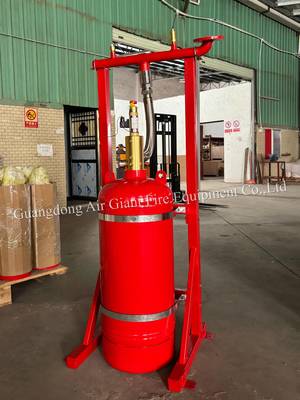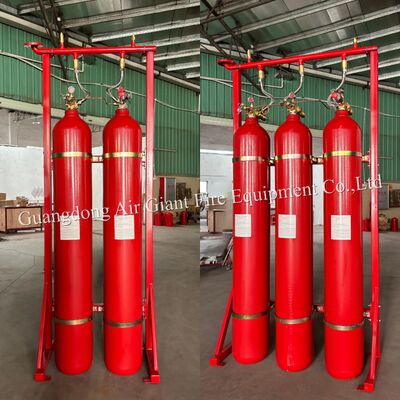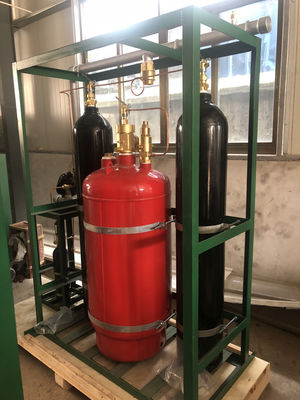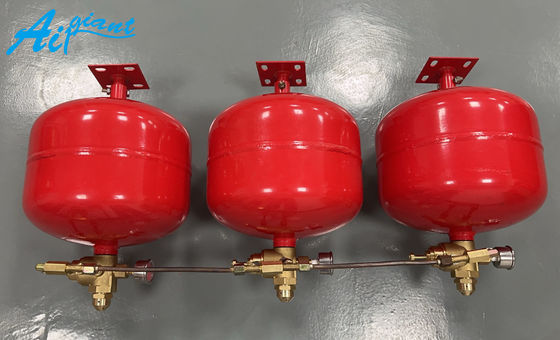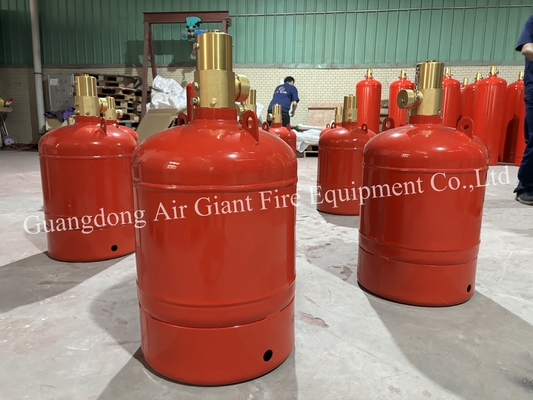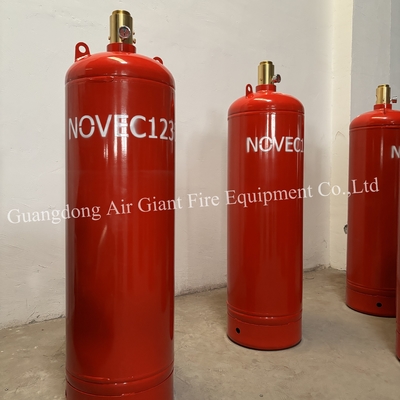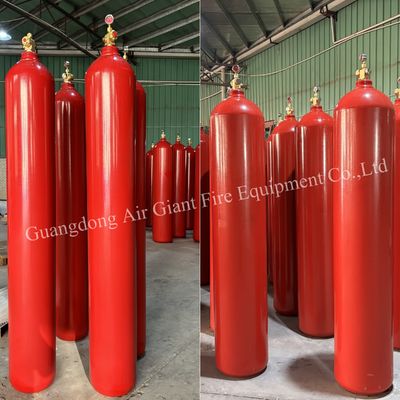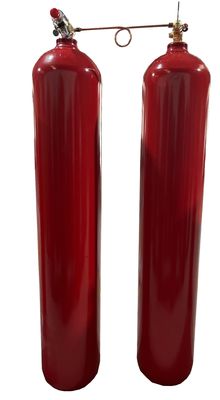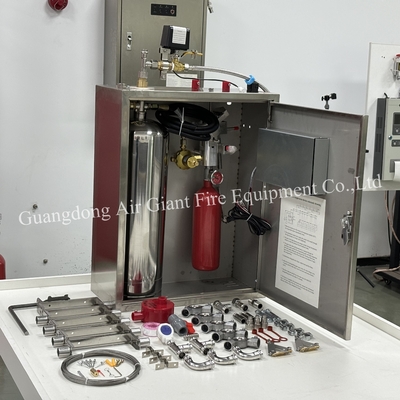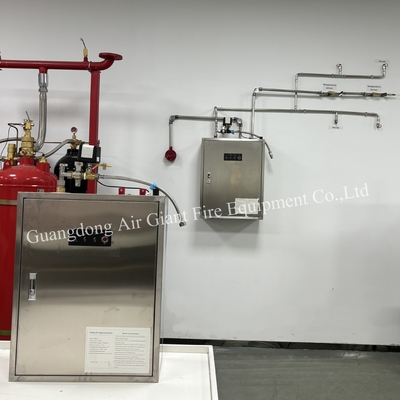Kitchen Hood Automatic Firefighting Equipment Kitchen Automatic Fire Extinguishing System
*** Description of Kitchen Fire Suprresion System
This device can achieve automatic monitoring, detection, and activation 24 hours a day, with a short spraying time of fire extinguishing agent and rapid extinguishing within 5 seconds. During fire extinguishing, the burning oil does not produce splashes. This product is started mechanically and does not require electricity. To prevent corrosion, all raw materials are made of stainless steel or copper. When installed and used, it does not occupy the kitchen area but only occupies the space and position. The installation of the number and position of nozzles is flexible and meets the requirements of the specifications. The on-site design and installation are carried out according to the number of stove fire holes. Environmentally friendly fire extinguishing agent, easy to clean, and convenient for daily cleaning. At the same time, the fire extinguishing device is installed on the surrounding walls of the protective zone, which does not occupy the ground space of the protective zone.
*** Components of Kitchen Fire Suprresion System
1. Temperature Detector (Thermal Element):Typically uses fusible alloy or glass bulb thermal sensors. When the temperature reaches the set value (usually 160°C–260°C), it automatically melts or breaks, triggering the fire suppression system.
2. Fire Suppressant Storage Cylinder: Stores specialized fire extinguishing agents (e.g., wet chemical fire suppressant).
3. Release Valve: Automatically opens when activated by the detection system, discharging the fire suppressant through the piping.
4. Manual Activation Device (Emergency Button): Installed in a visible location for manual fire suppression activation by personnel.
5. Nozzle/Spray Pipe: Positioned over high-risk fire areas such as stove tops and range hoods to ensure even distribution of the suppressant over the fire source.
6. Mechanical/Electric Control Unit: Receives signals from detectors, automatically shuts off gas/power (via a linked valve), and activates the suppressant release.
*** Working principle of kitchen Fire Suprresion System
A. Flame Detection and Activation
1. Thermal Fusible Metal Cable Release Device: When the oil pot on the kitchen stove catches fire, the intense heat from the flames will cause the thermal fusible metal cable release device to heat up and detach.
2. Thermal Detection System: Simultaneously, the thermal detection system will detect the flames or high temperature, triggering the release mechanism of the kitchen fire suppression system. During this step, the system pressurizes the fire extinguishing agent storage container and activates all auxiliary electric shut-off devices (such as gas shut-off valves) and alarm linkage devices.
B. Fire Extinguishing Agent Release
1. Fire Extinguishing Agent Spray: Once the release mechanism is activated, liquid fire extinguishing agents (such as foam, dry powder, or other specialized agents) are sprayed through nozzles onto the surfaces of kitchen stove equipment, as well as inside the exhaust hood, grease filter, and exhaust ducts. These specialized agents can quickly extinguish flames in the oil pot and form a covering layer to suppress the combustion of oil vapors, thereby preventing re-ignition.
2. Type of Fire Extinguishing Agent: Some kitchen fire suppression systems use high-pressure gas to propel the fire extinguishing agent. In this case, a mechanical actuator pierces the high-pressure gas cylinder, releasing high-pressure gas into a pressure-reducing valve. The gas then enters the top of the fire extinguishing agent cylinder, pushing the agent through delivery pipes to the nozzles for spraying.
C. Cooling and Flushing
1. Water Spray Valve Activation: After the system's extinguishing agent is sprayed, the water spray valve on the system will automatically open after approximately 3 to 8 seconds.
2. Water Flow Flushing: Water flows through the fire extinguishing agent pipes and nozzles, rapidly cooling and flushing the oil and stove equipment surfaces, ensuring the fire source is completely extinguished and preventing re-ignition.
D. System Reset and Inspection
1. Manual Reset: Some kitchen fire suppression systems require manual reset after extinguishing a fire, such as manually resetting the gas emergency shut-off valve to reopen.
2. System Inspection: After each use or periodically, conduct system inspections to ensure the device is in good working condition, the fire extinguishing agent is sufficient, and all components are tightly connected without leaks.
*** Advantage of Kitchen Fire Suprresion System
-- High-Efficiency Fire Suppression
-- Preventing Re-ignition
-- Environmentally Friendly and Harmless
-- High Specialization
-- Wide Applicability
*** Application of Kitchen Fire Suprresion System
1. Commercial Catering Establishments: Restaurants and Canteens, Hotels and Guesthouses
2. Public Institutions and Enterprises: Schools and Hospitals, Government and Enterprise Units Food
3. Special Locations: High-Rise Buildings, Special Industries
4. Other Regulated Locations: High-Risk Fire Units, Large commercial complex

*** Packages of Kitchen Fire Suprresion System
We pack products with first polyfoam and then the wooden cases. Once products are too big or customers require a pallet for products, we will make products a pallet. The following pictures are the common packing of products:


 Your message must be between 20-3,000 characters!
Your message must be between 20-3,000 characters! Please check your E-mail!
Please check your E-mail!  Your message must be between 20-3,000 characters!
Your message must be between 20-3,000 characters! Please check your E-mail!
Please check your E-mail! 

